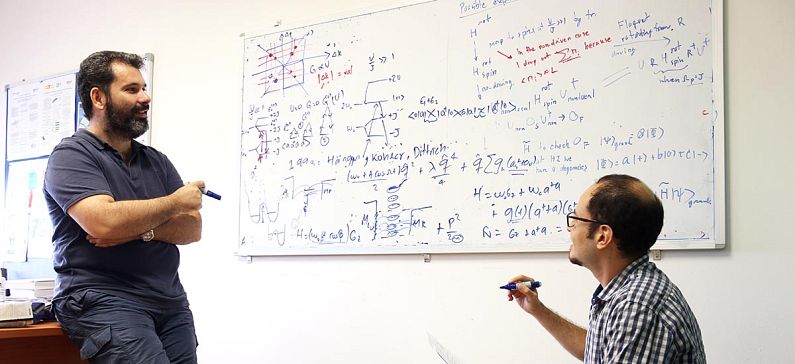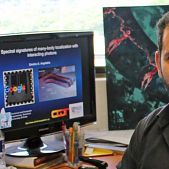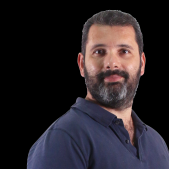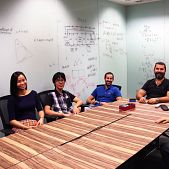
He created a quantum butterfly
Dimitris Angelakis is a tenured Associate Professor at School of Electronic and Computer Engineering, Technical University of Crete and jointly a Principal Investigator at Centre for Quantum Technologies, Singapore leading the Quantum Optics and Quantum Simulators Group.
He led a team of researchers at the Centre for Quantum Technologies who have collaborated with the scientists building Google’s quantum chips to simulate complex phenomena in physics.
Quantum simulators, which are special-purpose quantum computers, will help researchers identify materials with new and useful properties. The international team used photons in Google’s quantum chip to simulate the surprising and beautiful pattern of the ‘Hofstadter butterfly’, a fractal structure characterizing the behavior of electrons in strong magnetic fields. The results, published 1 December in Science, show how quantum simulators are starting to live up to their promise as powerful tools.
“We’ve always had this idea that we can use photons to simulate and better understand nature. Our collaboration puts this into practice,” says Dimitris Angelakis, who was born and raised in Chania, Crete in 1975.
He did his BSc and MSc studies in Physics University of Crete. During 1998-2001 he was a PhD student at Imperial College, QOLS group supported by Greek State Scholarship Foundation. He was elected junior research fellow at University of Cambridge (St Catharine’s JRF) and worked at DAMTP and the Centre for Quantum Computation in Cambridge 2001 to end of 2007. In 2008, he took over a faculty appointment at the Science Department Technical University of Crete, and in 2013 he moved to the School of Electronic and Computer Engineering. Since 2010 he is also a Principal Investigator at the Centre for Quantum Technologies, Singapore.
Dimitris Angelakis has been invited to deliver many talks in international meetings including the annual American Physical Society meeting, the Quantum Simulations meetings in Benasque Spain and the ICTP workshops. He has also delivered many invited seminars in universities and research institutions worldwide. He has organized and edited the proceedings of a NATO ASI conference, a joint school and workshop in Quantum Simulations, a review article for IOP Reports in Progress in Physics, and also edited a volume for Springer on quantum simulations with hybrid atom-photon systems. His work has been highlighted in the scientific media with articles n New Scientist, Nature Research Highlights, The Innovation Magazine, Physics World and BIMA Science among others.
Awards he has received include the “Institute of Physics, Quantum Electronics and Photonics Thesis Prize” in 2002 for the best PhD thesis in UK in the field if Quantum Electronics and Photonics, the “St Catharine’s College Cambridge JRF in Physics” in 2001, the “Valerie Myescrough Prize 2000” for graduate students performance, and has been an IKY (Greek State Scholarship Foundation) scholar for the consecutive years 1993-1997 (undergraduate), and 1998-2001(postgraduate).
He quite enjoys discussing science at all levels, sampling good wine and tries to learn play the Cretan Lyra. He is married with three children.











